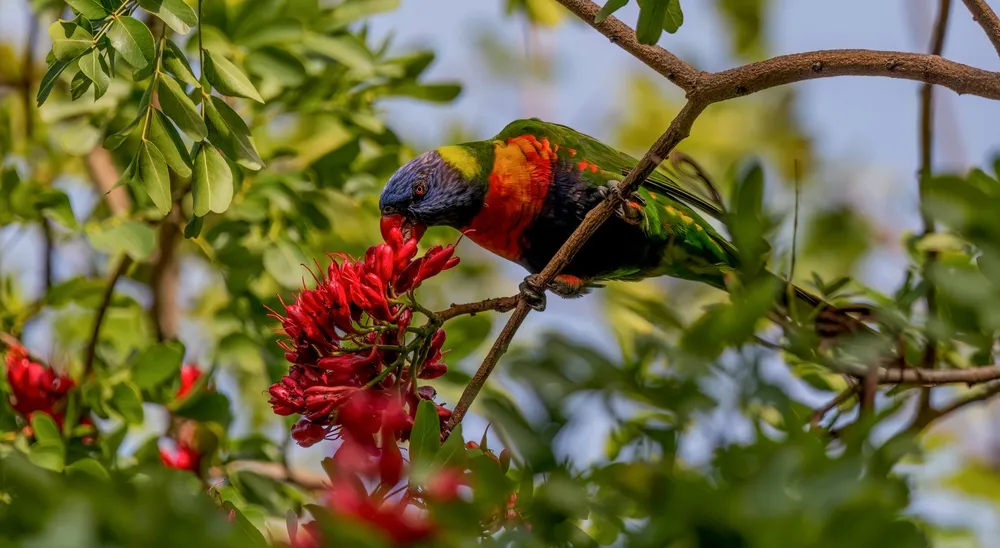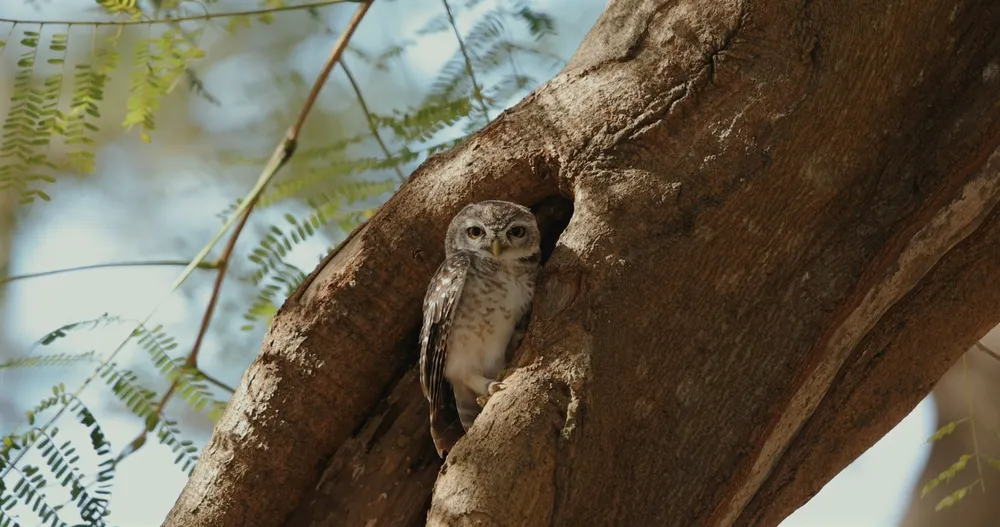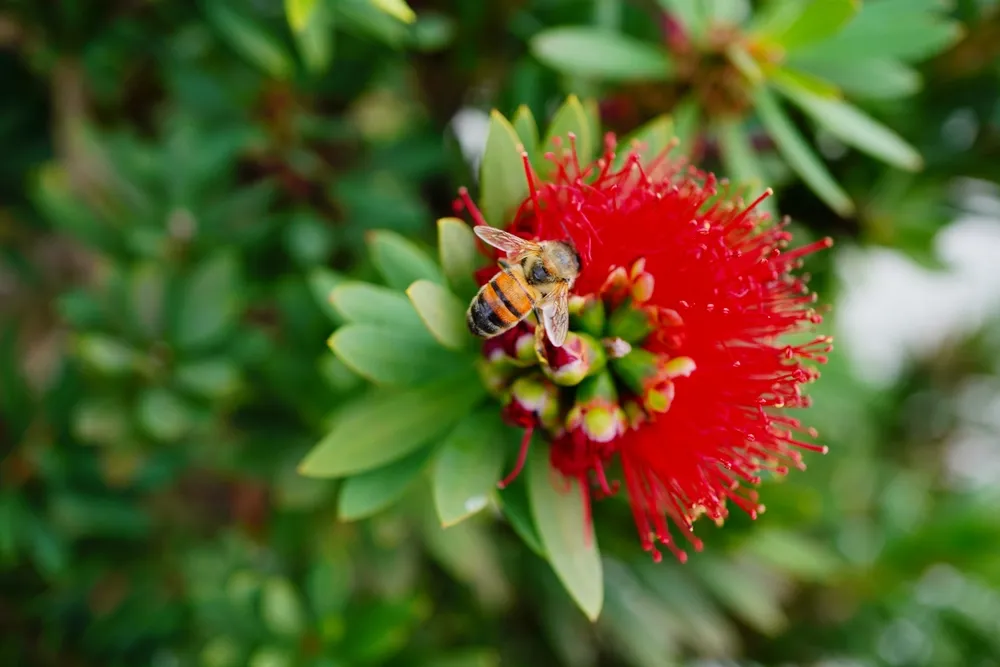Creating a thriving garden that attracts wildlife is about planting greenery and its connection with nature. All of us at North Shore Tree Services in Sydney know that the right tree choices can transform an ordinary backyard into a living habitat buzzing with life. By carefully selecting trees that support pollinators like birds and other native species, homeowners can play a vital role in protecting biodiversity right from their doorstep.
The beauty of a wildlife-friendly garden lies in its diversity. Trees that provide shelter and food invite all forms of life to take part in an ever-evolving ecosystem. Whether you have a small courtyard or a sprawling property, understanding how tree selection affects wildlife can help you design a landscape that’s both beautiful and beneficial. With a few thoughtful choices, your garden can become a sanctuary that supports nature year-round.

Why Native Trees Matter for Local Biodiversity
Native trees are the backbone of healthy ecosystems, offering local wildlife the food and shelter they’ve evolved to depend on. They thrive in local conditions while requiring less maintenance. They naturally fit into the ecological web that sustains creatures like the birds and the bees. Unlike imported species, native trees form symbiotic relationships with insects and fungi that enrich soil and promote long-term environmental balance. Choosing them ensures your garden contributes positively to the surrounding landscape instead of disrupting it.
Supporting Birds, Bees and Other Pollinators
Pollinators are crucial for maintaining biodiversity and their survival depends heavily on access to native flowering trees. Trees such as grevilleas, callistemons and eucalypts produce nectar and pollen that attract nectar-feeding birds like bees and butterflies throughout the year. The more variety you include, the more consistent your garden’s food supply becomes for these essential species.
- Selecting species with staggered flowering seasons ensures a continuous nectar source that supports pollinators even during dry months.
- Including trees with different flower shapes, colours and heights draws a diverse mix of species that strengthen pollination networks.
- Avoiding pesticides and chemical treatments helps preserve delicate pollinator populations that are sensitive to toxins.
Providing Food and Shelter for Small Mammals
Small mammals like possums and gliders rely on tree canopies and hollows for nesting and protection. Native species such as spotted gums and angophoras produce bark and foliage that encourage insect activity, providing a natural food source. Dense foliage also offers cover from predators and extreme weather conditions.
- Planting clusters of trees rather than isolated ones helps animals move safely between canopies without exposure to threats on the ground.
- Choosing trees with rough bark provides better grip for climbing species and fosters insects that serve as a natural food supply.
- Incorporating fruit-bearing natives such as lilly pillies offers nourishment for mammals while adding colour and texture to your landscape.
Enhancing Soil Health and Microhabitats
Healthy soil is the foundation of every living ecosystem and native trees help maintain it through their natural interactions with microbes and fungi. The roots of native species foster symbiotic relationships that increase nutrient availability and improve soil structure. By creating shade and dropping leaf litter, trees also support ground-dwelling microorganisms that contribute to soil vitality.
- Layering mulch beneath native trees helps retain moisture, regulate temperature and create a microhabitat for decomposers.
- Allowing some fallen leaves to remain on the ground encourages nutrient cycling and sustains soil-dwelling life.
- Planting deep-rooted species stabilises soil, reduces erosion and improves the underground environment where many small creatures thrive.
Creating Layers: Canopies, Understorey and Groundcovers
A wildlife-friendly garden thrives on diversity not only in species but in structure. Layering vegetation from tall canopy trees to shrubs and low groundcovers creates a multi-level habitat that accommodates a wide range of species. Each layer offers unique benefits such as shade, nesting areas and food sources. Recreating the natural tiers found in forests lets you mimic conditions where wildlife can feed, rest and breed safely.
Establishing a Strong Canopy Layer
The canopy acts as the backbone of your garden ecosystem, offering protection and shelter for countless species. Large trees such as eucalypts, blackbutts and paperbarks form this upper layer so that birds and mammals have nesting grounds or perches. Their wide crowns regulate temperature below to provide a cooler and more stable environment.
- Choosing species with varying heights allows natural layering that encourages a mix of wildlife activity across multiple levels.
- Maintaining mature canopy trees ensures continuity of habitat, especially for birds and mammals that depend on hollows formed over decades.
- Avoiding excessive pruning of upper branches preserves shelter zones essential for roosting and nesting.
Developing a Healthy Understorey
The understorey (made up of shrubs and small trees) supports many smaller species that prefer cover and mid-level foraging areas. Plants like wattles, banksias and tea trees attract pollinators and provide food for caterpillars and seed-eating birds. This middle layer also adds texture and visual balance, connecting the canopy above with the ground below.
- Combining evergreen and deciduous varieties maintains consistent cover through changing seasons while encouraging year-round diversity.
- Selecting shrubs that bloom at different times ensures continual nectar and pollen availability for wildlife.
- Positioning understorey plants beneath taller trees creates shade tolerance and protects them from wind and temperature extremes.
Strengthening the Groundcover Layer
Groundcovers form the base of your ecosystem to help conserve moisture, prevent erosion and shelter small creatures. Native grasses, creeping saltbush and lomandras are ideal choices that stabilise soil while offering seeds and shelter. They also form corridors for insects, lizards and frogs that rely on ground-level vegetation for safety.
- Planting dense groundcovers near garden edges helps keep weeds at bay and strengthens boundary habitats.
- Mixing species with different textures and growth habits enhances resilience and ensures steady food availability for small fauna.
- Leaving some bare patches or logs allows reptiles and insects to bask, hide and regulate their body temperature naturally.
Avoiding Common Pitfalls: Pest Attractants and Invasive Species
While it’s tempting to plant exotic trees for their beauty, many can become invasive or attract unwanted pests that disrupt native ecosystems. Invasive species can crowd out native plants, alter soil chemistry and compete for resources. To maintain a balanced ecosystem, homeowners should understand which species to avoid and how to prevent garden issues from escalating. A well-managed, wildlife-friendly garden always starts with informed choices.
Trees to Avoid in Sydney Suburbs
Even if certain species appear attractive, they may cause long-term harm by spreading uncontrollably or harbouring pests. Species such as camphor laurels, privets and lantanas are notorious for displacing native flora and reducing biodiversity. These trees can quickly dominate landscapes, making it difficult for native species to thrive.
- Removing existing invasive plants early prevents them from reseeding and spreading into nearby bushland.
- Replacing exotics with hardy natives keeps your garden visually appealing while restoring ecological balance.
- Consulting professionals ensures safe removal and appropriate replacement species suited to your soil and environment.
Managing Pest-Prone Trees
Even native trees can suffer pest infestations if planted in poor conditions or overcrowded areas. Overly dense canopies, poor airflow and excessive moisture create breeding grounds for pests like borers and leaf miners. Careful placement and maintenance are key to keeping trees healthy and pest-resistant.
- Spacing trees properly ensures adequate sunlight and airflow, reducing humidity levels that attract pests.
- Regularly inspecting foliage for early signs of damage allows swift treatment before infestations spread.
- Using organic deterrents such as neem oil supports pest control without harming beneficial insects or pollinators.
Understanding the Impact of Excess Fertiliser
Many gardeners over-fertilise trees in an effort to encourage fast growth, but this can harm both soil health and wildlife. High nitrogen levels can discourage native fungi and bacteria, upsetting the ecosystem balance. Over-fertilising also promotes weak growth that’s more susceptible to disease.
- Applying slow-release organic fertilisers maintains soil integrity while feeding plants steadily.
- Testing soil before fertilising prevents nutrient overload and ensures proper application rates.
- Encouraging natural composting through leaf litter and mulch builds healthier soil over time.

Choosing Trees for Maximum Habitat Value
To make your garden truly supportive of wildlife, it’s important to consider trees that offer multiple benefits beyond aesthetics. Some trees provide food, nesting sites and even materials for insects and birds. Others create hollows and cavities over time, which are essential for breeding and roosting. Selecting the right mix of trees ensures your garden supports a wide range of creatures for generations.
Decaying Wood and Hollow Creation for Wildlife
Decaying wood may seem harmless, but it can weaken a tree’s structure and increase the risk of falling branches or collapse. This makes unmanaged decay a potential hazard, particularly near homes, roads, or public spaces. At the same time, hollows and deadwood are essential habitats for birds, bats, insects, and small mammals. With the right management, both safety and biodiversity can be protected.
- Retaining only safe levels of dead wood allows wildlife to benefit without endangering people or property.
- Creating artificial hollows or nesting boxes provides secure alternatives where mature trees are limited.
- Tree removalists and arborists help balance habitat value with safety by monitoring decay and removing hazardous sections.
Selecting Trees with Edible or Nectar-Producing Features
Trees that produce nectar, fruit or seeds sustain wildlife through every season. Banksias, wattles and eucalypts are well-known for their consistent food production. Integrating a mix of these species attracts a variety of animals and maintains year-round activity.
- Choosing trees that flower during lean seasons ensures food availability when resources are scarce.
- Including a mix of fruiting and flowering natives caters to both nectar and seed feeders.
- Planting in clusters improves pollination and creates a concentrated food source for wildlife.
Supporting Night-Time Wildlife
A truly complete habitat considers nocturnal species that thrive after sunset. Possums, microbats and night birds depend on specific trees for shelter and feeding opportunities. Providing the right trees enhances the garden’s ecological balance even during the dark hours.
- Selecting flowering gums that bloom at dusk offers nectar for night-flying species.
- Avoiding bright artificial lighting near trees protects nocturnal patterns and reduces disorientation.
- Leaving some natural undergrowth undisturbed gives nocturnal creatures safe resting zones.
Balancing Aesthetics with Ecological Impact
Creating a wildlife-friendly garden doesn’t mean sacrificing beauty. With thoughtful planning, native trees can enhance your garden’s appearance while supporting biodiversity. Balancing aesthetics and ecology involves choosing trees that blend visual appeal with environmental function. Every texture, colour and shape can contribute to a garden that looks inviting while serving nature’s needs.
Blending Colours and Textures Naturally
Native trees offer a diverse palette of foliage colours, bark patterns and flowering displays. Combining species with contrasting features creates visual depth without compromising ecological value. Natural groupings mimic bushland beauty while remaining functional for wildlife.
- Pairing silver-leaved eucalypts with dark-leaved banksias adds contrast and elegance.
- Mixing fine-textured shrubs with broad-leaved canopies softens transitions and improves biodiversity.
- Using tree bark variations introduces tactile and visual interest that also benefits climbing species.
Designing Seasonal Visual Interest
By selecting trees that bloom at different times, your garden stays vibrant all year while ensuring continuous wildlife support. Seasonal change brings fresh bursts of colour and activity, maintaining a dynamic landscape. It also helps stagger food availability for various species.
- Combining winter-flowering wattles with summer-blooming callistemons creates colour harmony and habitat variety.
- Allowing deciduous natives provides seasonal light changes that enhance mood and temperature control.
- Using seed-producing species extends visual interest into autumn as wildlife gathers to feed.
Incorporating Water Features with Trees
Water plays an essential role in supporting wildlife and trees planted near ponds or small basins benefit both plants and animals. Strategically placed trees shade water, reduce evaporation and create cool microclimates for birds and insects. Integrating water elements adds tranquillity while promoting biodiversity.
- Placing native trees near ponds stabilises soil and prevents erosion while improving aesthetics.
- Using shallow basins with gradual edges provides safe access for small birds and animals.
- Regularly cleaning water features prevents stagnation and maintains a healthy ecosystem.

Maintaining Wildlife-Friendly Trees: Safety and Pruning Tips
A thriving wildlife garden still requires regular maintenance to stay healthy and safe. Overgrown or damaged branches can pose risks if not properly managed. Pruning at the right time and in the right way helps trees flourish without disturbing resident wildlife. That balance between care and conservation ensures your garden remains both secure and nurturing.
Timing Your Pruning Activities
Pruning at appropriate times minimises stress for trees and avoids disturbing nesting seasons. Early spring or late autumn is often best, depending on species and local conditions. Proper timing helps maintain both structural integrity and ecological value.
- Checking for nesting birds or active wildlife before pruning avoids accidental disruption.
- Removing only necessary branches keeps canopies healthy while preserving natural shelter.
- Spacing pruning sessions through the year prevents sudden habitat loss.
Promoting Regrowth and Habitat Renewal
After pruning, trees can be encouraged to regenerate in ways that continue supporting wildlife. Managed regrowth maintains shade and nesting opportunities while improving health and form. Allowing natural recovery helps sustain the ecosystem balance.
- Applying mulch after pruning retains moisture and promotes root recovery.
- Leaving trimmed branches in garden corners creates habitats for insects and small animals.
- Encouraging multi-stem growth in younger trees provides future nesting options.
Monitoring Tree Health and Safety
Regular inspections are key to maintaining tree health and ensuring your garden remains safe for people and wildlife. Professional assessments can identify early signs of decay or imbalance that may affect stability. Preventive maintenance is always better than emergency action.
- Engaging certified arborists for periodic checks ensures professional evaluation and care.
- Observing changes in bark, leaf colour or canopy density helps catch problems early.
- Managing deadwood responsibly retains habitat benefits while ensuring safety.
Building a garden that welcomes wildlife is one of the most rewarding ways to connect with nature and protect local biodiversity. Every tree you plant, nurture and maintain can make a difference in supporting native species. With guidance from experienced professionals like North Shore Tree Services, you can ensure your garden is not only safe and sustainable but also a sanctuary for countless creatures.
A well-planned landscape beautifies your home while contributing to the wellbeing of the environment around it. By selecting the right trees, maintaining them properly and balancing form with function, you create a legacy that benefits both people and nature for years to come.

